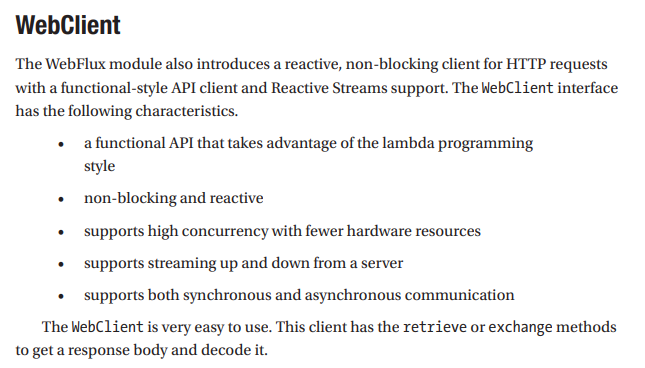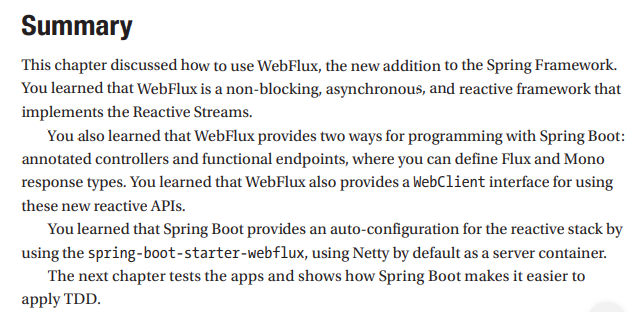
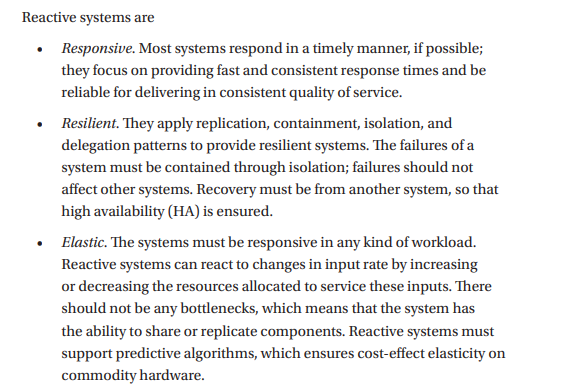
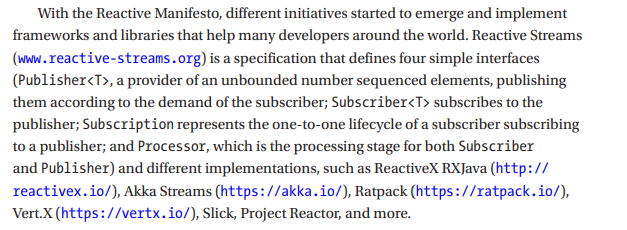
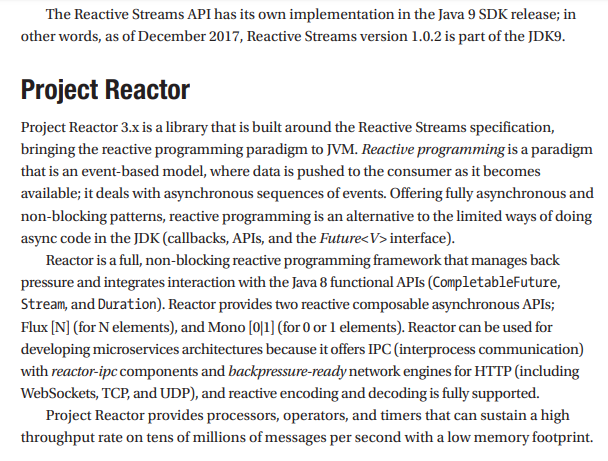



package com.apress.reactor.example; import com.apress.reactor.example.domain.ToDo; import org.slf4j.Logger; import org.slf4j.LoggerFactory; import org.springframework.boot.CommandLineRunner; import org.springframework.context.annotation.Bean; import org.springframework.context.annotation.Configuration; import reactor.core.publisher.Mono; import reactor.core.publisher.MonoProcessor; import reactor.core.scheduler.Schedulers; import java.time.Duration; @Configuration public class MonoExample { static private Logger LOG = LoggerFactory.getLogger(MonoExample.class); @Bean public CommandLineRunner runMonoExample(){ return args -> { MonoProcessor<ToDo> promise = MonoProcessor.create(); Mono<ToDo> result = promise .doOnSuccess(p -> LOG.info("MONO >> ToDo: {}", p.getDescription())) .doOnTerminate( () -> LOG.info("MONO >> Done")) .doOnError(t -> LOG.error(t.getMessage(), t)) .subscribeOn(Schedulers.single()); promise.onNext(new ToDo("Buy my ticket for SpringOne Platform 2018")); //promise.onError(new IllegalArgumentException("There is an error processing the ToDo...")); result.block(Duration.ofMillis(1000)); }; } }

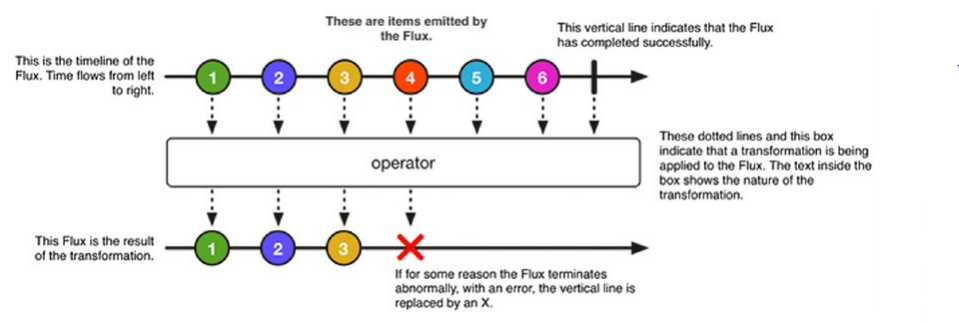
package com.apress.reactor.example; import com.apress.reactor.example.domain.ToDo; import org.slf4j.Logger; import org.slf4j.LoggerFactory; import org.springframework.boot.CommandLineRunner; import org.springframework.context.annotation.Bean; import org.springframework.context.annotation.Configuration; import reactor.core.publisher.EmitterProcessor; import reactor.core.publisher.Mono; import reactor.core.scheduler.Schedulers; import java.util.List; @Configuration public class FluxExample { static private Logger LOG = LoggerFactory.getLogger(FluxExample.class); @Bean public CommandLineRunner runFluxExample(){ return args -> { EmitterProcessor<ToDo> stream = EmitterProcessor.create(); // Log values passing through the Flux and capture the first coming signal Mono<List<ToDo>> promise = stream .filter( s -> s.isCompleted()) .doOnNext(s -> LOG.info("FLUX >>> ToDo: {}", s.getDescription())) .collectList() .subscribeOn(Schedulers.single()); // Publish a value stream.onNext(new ToDo("Read a Book",true)); stream.onNext(new ToDo("Listen Classical Music",true)); stream.onNext(new ToDo("Workout in the Mornings")); stream.onNext(new ToDo("Organize my room", true)); stream.onNext(new ToDo("Go to the Car Wash", true)); stream.onNext(new ToDo("SP1 2018 is coming", true)); stream.onComplete(); promise.block(); }; } }



